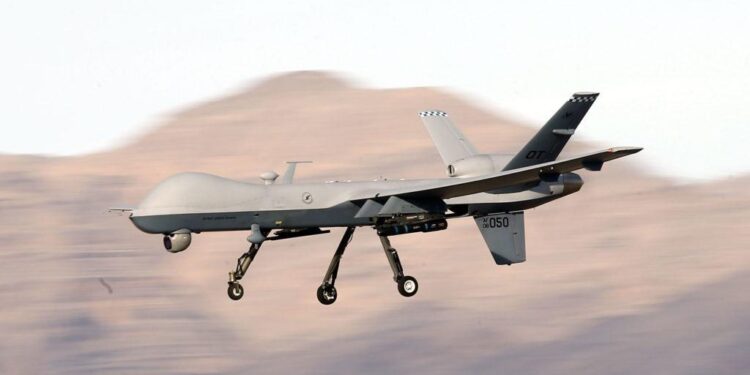Denmark faces mounting security concerns as recent drone attacks have exposed vulnerabilities within the nation’s defenses, prompting urgent calls for a comprehensive response. The incidents, which have targeted critical infrastructure and raised alarms among government officials, underscore the growing threat posed by unmanned aerial vehicles in modern conflict. As authorities scramble to assess the damage and prevent future breaches, the country finds itself at a crossroads, weighing strategic options to bolster its security posture against an evolving and unpredictable adversary.
Drone Strikes Unveil Critical Gaps in Denmark’s National Security
Recent drone incursions into Danish airspace have sharply exposed vulnerabilities in the country’s defense apparatus. Security officials admit that existing surveillance systems and interception protocols were neither designed nor equipped to handle the speed and stealth of modern unmanned aerial vehicles. This unanticipated challenge has sparked urgent calls for comprehensive upgrades across multiple sectors, from radar technology to rapid response units, reflecting a shift in Denmark’s strategic defense priorities.
Key weaknesses identified include:
- Insufficient drone detection range and tracking accuracy
- Fragmented command-and-control coordination among military branches
- Lack of dedicated anti-drone legislation and enforcement mechanisms
- Underfunded rapid deployment teams tailored for emerging aerial threats
| Security Component | Current Capability | Required Enhancement |
|---|---|---|
| Radar Systems | Medium-range detection | Long-range, drone-specific sensors |
| Interceptors | Designed for manned aircraft | Automated drone neutralization tools |
| Legislation | Limited anti-drone policies | Comprehensive UAV regulation framework |
Experts Urge Rapid Investment in Advanced Counter-Drone Technologies
As drone incursions escalate threats to critical infrastructure and national security, specialists emphasize the urgent necessity for Denmark to bolster its defensive capabilities. Current counter-drone systems only scratch the surface of what is required to detect, identify, and neutralize increasingly sophisticated unmanned aerial vehicles. Investment in cutting-edge technologies such as AI-driven radar, signal-jamming devices, and kinetic interception is deemed essential to restore and maintain aerial sovereignty.
The complexities surrounding drone threats demand a multi-layered approach combining real-time intelligence, swift response mechanisms, and robust legal frameworks. Experts urge policymakers to leverage both domestic innovation and international collaboration to accelerate deployment and integration of these systems. Failure to act promptly could leave Denmark vulnerable to further covert and damaging attacks.
- AI-powered detection: Automated threat recognition and pattern analysis
- Signal disruption: Jamming communication links between drones and operators
- Kinetic solutions: Drone interceptors capable of physical neutralization
- Integrated command: Centralized monitoring with rapid decision-making
| Counter-Drone Technology | Function | Deployment Status |
|---|---|---|
| AI Radar Systems | Real-time drone detection & classification | Emerging |
| Signal Jammer | Disrupt drone communications | Partially Used |
| Drone Interceptors | Physical neutralization of threats | Limited |
| Command & Control Units | Consolidated threat response | Developing |
Government Faces Pressure to Develop Comprehensive Response Strategy
Denmark’s political leaders are currently under intense scrutiny as the recent drone incidents have exposed weaknesses in the nation’s security framework. Critics argue that the absence of a coordinated and proactive policy has left the country vulnerable to aerial threats. Parliament is urging for the immediate formation of a multi-agency task force, tasked with developing clear protocols to detect, neutralize, and respond to drone incursions before they can cause significant damage.
Key areas identified for urgent action include:
- Enhancing radar and sensor technologies to improve early detection capabilities.
- Establishing legal frameworks addressing unauthorized drone use in sensitive zones.
- Strengthening cooperation between military and civilian agencies for rapid response.
- Launching public awareness campaigns on drone safety and reporting procedures.
| Agency | Current Capability | Proposed Upgrade |
|---|---|---|
| Danish Defence | Basic tracking | Advanced AI-assisted radar |
| Security Services | Reactive protocols | Proactive threat assessment |
| Civil Aviation Authority | Limited drone regulations | Comprehensive drone no-fly zones |
In Summary
As Denmark confronts the alarming reality of drone attacks on its soil, questions about national security and defense readiness have come to the forefront. The incidents underscore the evolving nature of modern threats and the urgent need for comprehensive strategies to safeguard critical infrastructure. With government officials actively seeking effective responses, the coming months will be pivotal in shaping Denmark’s approach to drone-related security challenges and protecting its citizens from emerging airborne risks.
















